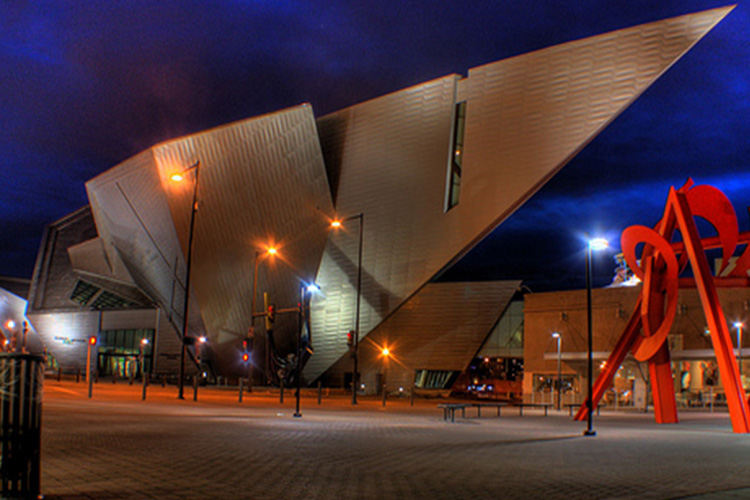
The Denver Art Museum. photo courtesy by the Denver Art Museum
United States institutions are following the lead of doctors in Brussels, Belgium, by prescribing museum visits to help heal patients.
“Having your doctor send you to a museum as a mental health booster sounds like prescribed culture or prescribed fun,” Kinara Sanchez, a senior at Thomas Jefferson High School remarked. “It is a funny concept, but something that I feel everyone should try.”
Confinement, masks, and social distancing led the way for an ever-growing awareness towards mental health and its impact on daily life. Thousands of people took on meditation, mindfulness, and pleasant activities scheduling (a strategy for cognitive behavioral therapy) to cope with the stress and anxiety caused by the pandemic. But, individuals were not the only ones with this initiative.
In 2021, Belgium developed a new pilot program that allowed doctors to offer “free visits to five public museums in the city, covering subjects from fashion to sewage,” The Guardian reported. The program aims to assist those who are dealing with stress, trauma, and anxiety among other mental health issues. The initiative includes “the publicly funded museums on the Grand Place, Fashion and Lace on Rue de la Violette, the Sewer museum by Midi railway station and Manneken-Pis’s Wardrobe. The Contemporary Art Centre on Place Sainte-Catherine is also part of the project.” The country is hoping that even private art collections and museums will join in.
The project followed the 2018 initiative in Montreal, Canada where the Montreal Museum of Fine Arts and the Médecins Francophones du Canada (French-Speaking Doctors of Canada) partnered to allow doctors to add prescribed museum visits to their patient’s treatments, and an even earlier study, from 2015 to 2017 regarding the United Kingdom, called their project “Museums on Prescription.” The research was focused on the “psychological wellbeing of older people who took part in organized events at a museum,” Forbes Magazine reported. “This study, too, showed a positive effect on wellbeing among people who participated in the museum activities.”
Even though it does not have the same strategies and controlled environment the research in the UK had, the three-month program in Brussels offers individuals refuge from the pressures of the outside world while giving them a break from isolation. It is an opportunity to explore, learn, and socialize. “The thing about museums is that you never know what you’ll find,” Sanchez explained. “If you go to a museum of contemporary art you can find anything from revolutionary or fun zines to 3D collage and hands-on activities. It is like entering a world of new experiences. A world where you feel free.”
However, Belgium, Canada, and the UK are not the only ones testing the waters of museum visits and activities as a healthy mind-booster. The Gadsden Arts Center & Museum in Quincy, Florida has not only focused on exhibitions featuring meditation, tranquility, and scenes of nature, but also on at-home programs offered to families like Art@Home Kits. This features “video activities [with] materials found at home…Thirty activities available online now range from painting with q-tips and shaving cream, to learning how to create a tessellation, to painting with watercolors,” or Art Talk Live online bringing art curators and scholars to everyone’s home.
The Denver Art Museum also presents an immersive installation for the audience’s relationship with memory through storytelling and animation in Lares Feliciano’s exhibition called Memory Mirror. The artist invites the community to send images or audio recordings of personal experiences to turn into a changing animation that becomes part of the display. “Memory is just so, so important and so precious. And it’s so fleeting that if we can capture it and hold onto it, make it tangible in some way, there’s some real healing to that,” Lares Feliciano explained to the museum.
After the pandemic, the world’s priority is to heal: to feel as free or as “alive” as they did before covid hit. Maybe the answer to such a plea can be found in the little pleasures life and art offer by visiting a place to be surprised, a place where daily pressures and expectations are not invited, only the people behind them.
“I feel like the idea behind these prescribed museum visits is the same TJ has for the first Friday’s activities,” Sanchez remarked. “To remind everyone that work, studying, and responsibilities are not everything in life. Fun and enjoyment are just as important.”